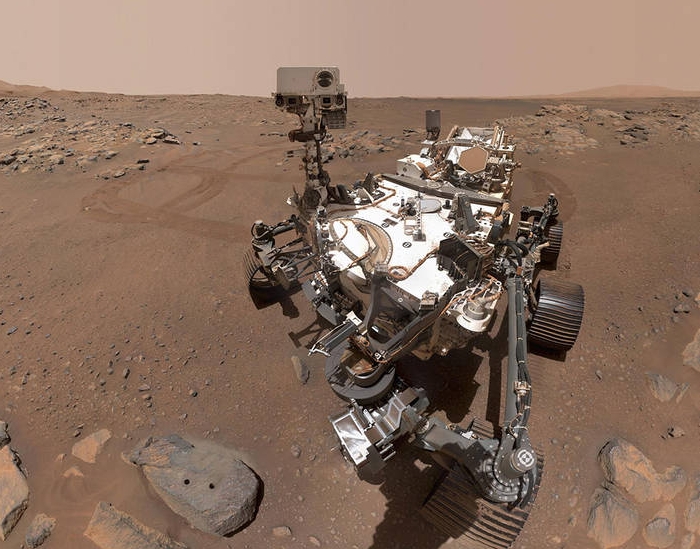Occasionally, as various orbiters make their rounds of Mars, they spot their ground-based friends far below.
Source: Science Alert
In a new image from NASA’s Mars Reconnaissance Orbiter (MRO), Perseverance has made a guest appearance. From hundreds of kilometers above the red planet, the rover appears as a tiny speck in the South Séítah region of the Jezero Crater.
It’s an image that demonstrates the very different instruments that we are using to explore the mysterious planet, from afar and from up very close indeed.

The mission of MRO, which has been in orbit since 2006, is primarily to study the atmosphere and large-scale geology of Mars.
To a lesser extent, it’s also helping the ground-based missions – the rovers Curiosity and Perseverance, and the stationary, quake-monitoring Mars InSight lander.
Curiosity’s mission is to explore the Gale Crater on Mars to learn more about the planet’s climate and geology, and the history of both, as well as help us assess whether or not Mars is, or has ever been, hospitable to life.

Perseverance, on the other hand, in addition to collecting more data on the climate and geology of Mars, is specifically tasked with looking for signs of life, such as the fossils of microbes that may have emerged when Mars was a wetter place than it is today.
The South Séítah region consists of a series of ridges covered with sand dunes and sprinkled with boulders and shards of rock. Perseverance has just collected a sample of rock to be returned to Earth by a future mission; that sample was collected from a relatively young region of Mars. South Séítah is thought to be much older, and therefore should provide an interesting contrast.
On arrival in South Séítah in August, Perseverance sent its helicopter, Ingenuity, ahead to take images so that the Perseverance team could assess whether the area was worth exploring further.
However, further science is going to have to wait. Currently, Mars is in conjunction – that is, on the opposite side of the Sun from Earth, an event that happens every two years.
During this time, communications between Mars missions and Earth are blocked by our star. We won’t be able to receive or send transmissions until mid-October.
We hope the rovers, lander, and orbiters are all enjoying their holiday.
Source: Science Alert

































Leave a Comment
You must be logged in to post a comment.